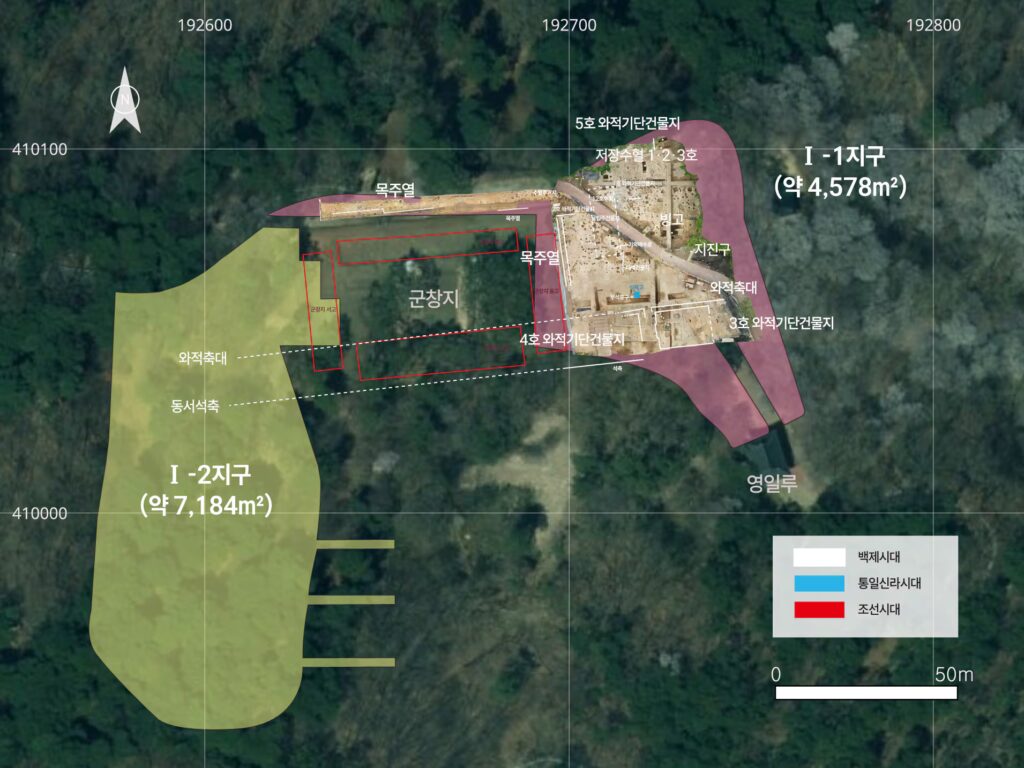 Ice House, Busosanseong Fortress, South Korea. Credit: National Research Institute of Cultural Heritage, Buyeo.
Ice House, Busosanseong Fortress, South Korea. Credit: National Research Institute of Cultural Heritage, Buyeo.
The elite of a vanished kingdom once kept summer at bay with a cave of ice. Archaeologists in South Korea have uncovered the country’s earliest known ice storage chamber. It lies inside Busosanseong Fortress, a UNESCO World Heritage site overlooking the Geum River. The find dates to the Baekje Kingdom’s Sabi period, roughly 1,400 years ago. It’s the first structure of its kind tied to the Baekje rule.
Ancient workers carved a roughly U-shaped room into bedrock, about 7 by 8 meters (23 by 26 feet). They reinforced the southern wall with stone blocks. That likely helped the interior stay cool. A pit in the center served as a drain.
In other words, this was an ancient freezer with a built-in sump.
An Ancient Freezer Beneath a Fortress
Researchers found the ice house during the seventeenth excavation of Busosanseong Fortress, a site about 90 miles south of Seoul. This fortress served as the royal seat of the Baekje Kingdom during its final century, known as the Sabi period (538–660 CE). Perched above the Geum River basin, it was both palace and bulwark — one of the dynasty’s last strongholds before it fell to a joint invasion by the Silla and Tang kingdoms.
Now, archaeologists have added a new chapter to its history. According to South Korea’s National Research Institute of Cultural Heritage (NRICH), “The ice house was a specialized facility for long-term ice storage, a hierarchical space that could only have been built and operated by a strong royal authority and state.”
That makes sense because in the sixth century, ice wasn’t a convenience. It was an assertion of control. Only the royal elite could afford to harvest, store, and maintain frozen water through the seasons. In a world before refrigeration, having ice on demand meant you commanded labor, knowledge, and, in a way, nature itself.
Rituals, Coins, and Divine Coolness
 A jar discovered alongside the ice storage. It is presumed to be a jijingu, a ritual item buried before construction to pray for safety to the land deity. Credit: National Research Institute of Cultural Heritage, Buyeo
A jar discovered alongside the ice storage. It is presumed to be a jijingu, a ritual item buried before construction to pray for safety to the land deity. Credit: National Research Institute of Cultural Heritage, Buyeo
The ice house wasn’t alone. Beneath it, researchers found a sealed earthenware jar — known as a jijingu — buried as part of a ritual blessing before construction began. Inside were five Chinese Wu Zhu (or wushu) coins, symbols of prosperity and divine protection.
 A Chinese Five-zhu coin discovered inside a jar buried as a jijingu. Credit: National Research Institute of Cultural Heritage, Buyeo
A Chinese Five-zhu coin discovered inside a jar buried as a jijingu. Credit: National Research Institute of Cultural Heritage, Buyeo
The NRICH explained that this ritual was meant to ensure the structure’s safety and invite good fortune. The short-necked jar, with a rounded lid handle, is “a ritual item buried before construction to pray for safety to the land deity.”
These coins are a small but powerful signal of Baekje’s cosmopolitan reach. The kingdom traded and exchanged culture with China, and also absorbed Buddhist influences, blending them with local animist traditions.
Keeping ice through a Korean summer isn’t easy. It required technical insight, like knowledge about positioning chambers underground to exploit cooler temperatures, carving into bedrock for insulation, and adding drainage to prevent flooding.
 Excavation survey status map of Areas I-1 and 2 at Busosanseong Fortress, Buyeo. Credit: National Research Institute of Cultural Heritage, Buyeo
Excavation survey status map of Areas I-1 and 2 at Busosanseong Fortress, Buyeo. Credit: National Research Institute of Cultural Heritage, Buyeo
Ancient Freezers
Across the world, civilizations were solving similar problems. In Persia, people built massive yakhchal domes that stored ice in the desert heat. In China, royal ice pits supplied palaces with chilled water. And in Rome, snow from mountains was packed into underground vaults. Baekje’s ice house now joins the international ancient roster, proof that controlling temperature was as much a symbol of power and progress as building a palace.
Even today, we take ice for granted. It hums quietly in freezers, clinks in glasses, and keeps vaccines viable. But 1,400 years ago, every ice cube above freezing temperatures represented privilege, organization, and human ingenuity.
Archaeologists are not done digging. The team plans to move next to the fortress’s western sector, where a Joseon-era military storage site may connect to the newly unearthed structures. “This area is highly likely connected to the structures identified in the 17th survey and is expected to contribute to clarifying the concrete remains of the Baekje Sabi-period royal palace,” said a researcher from the NRICH.